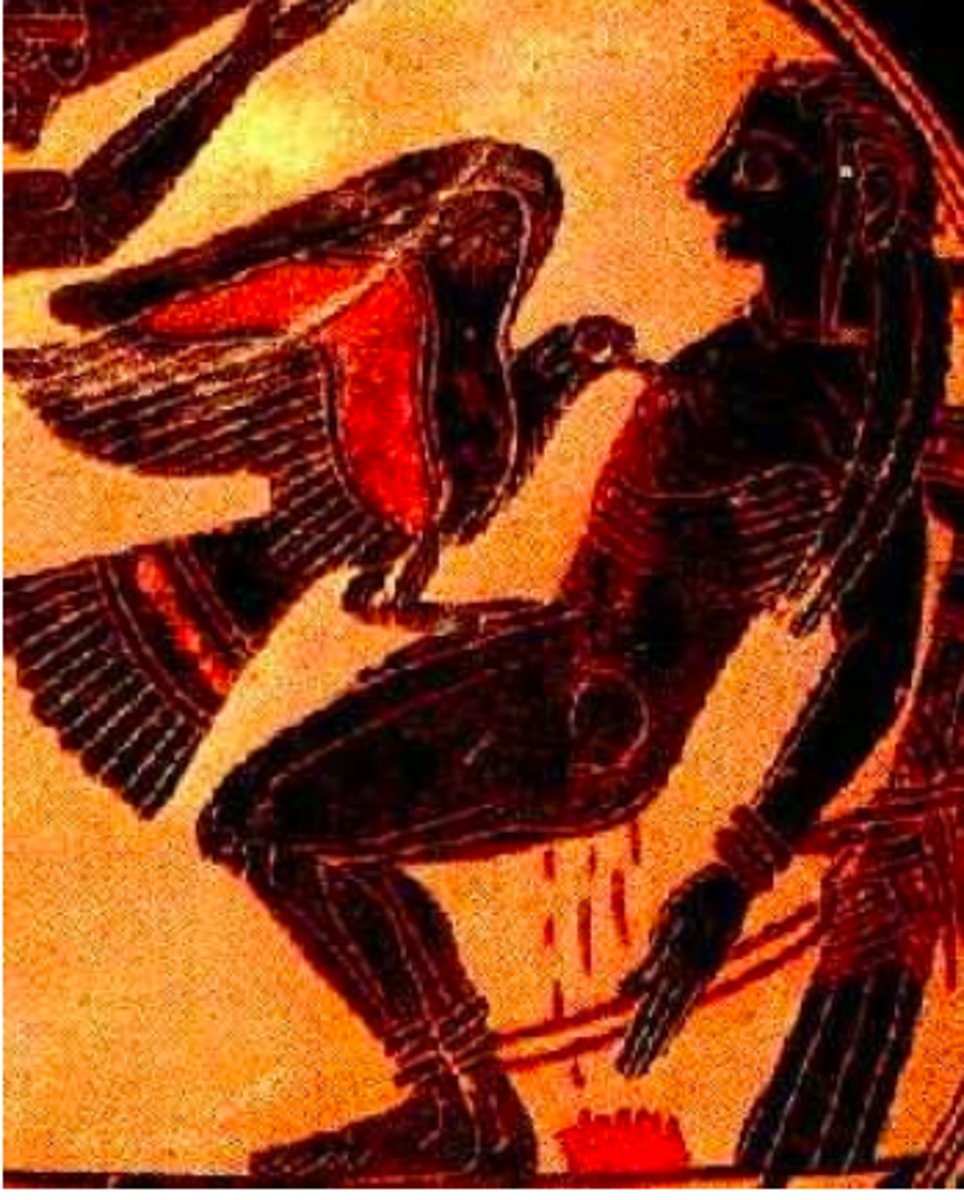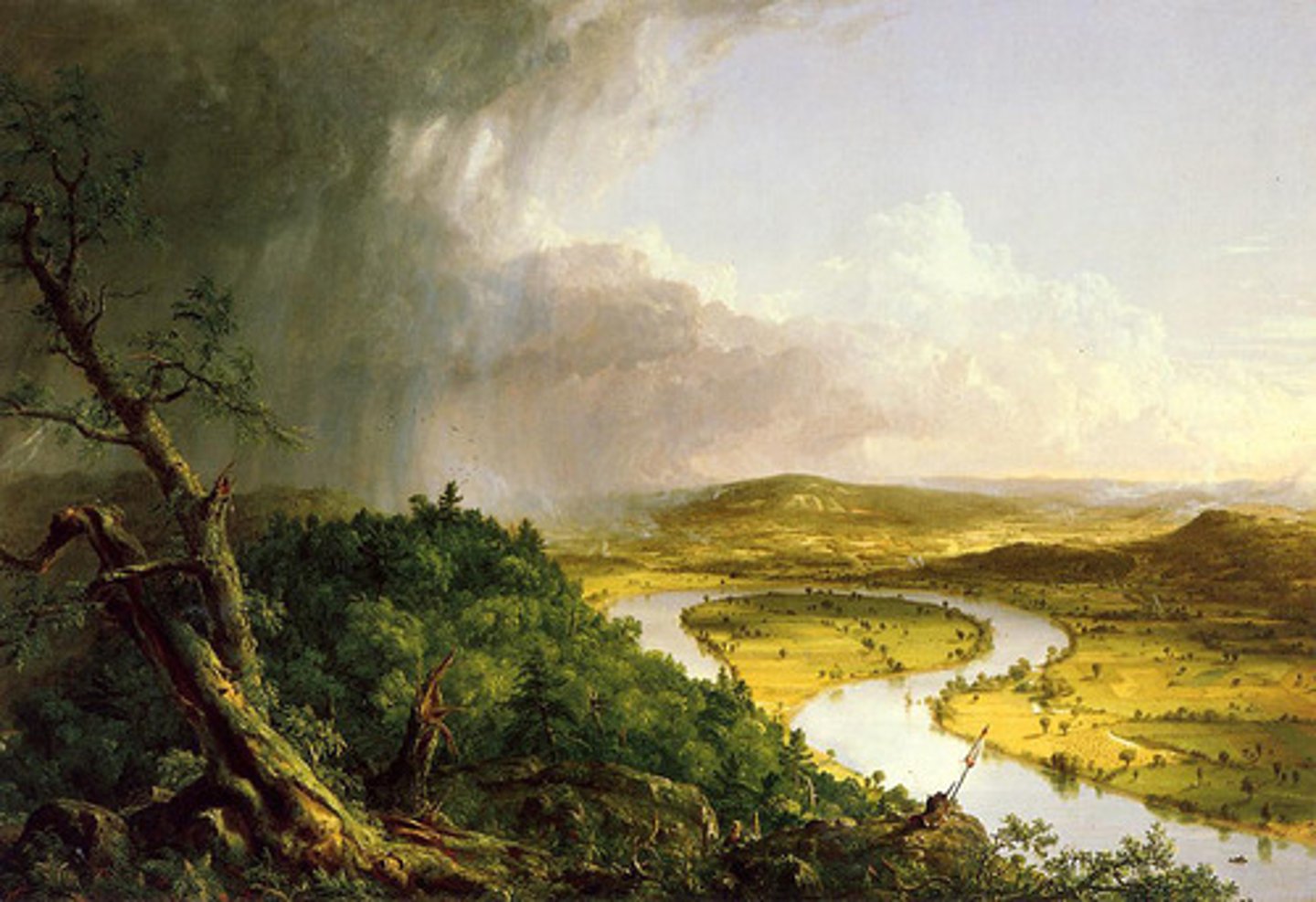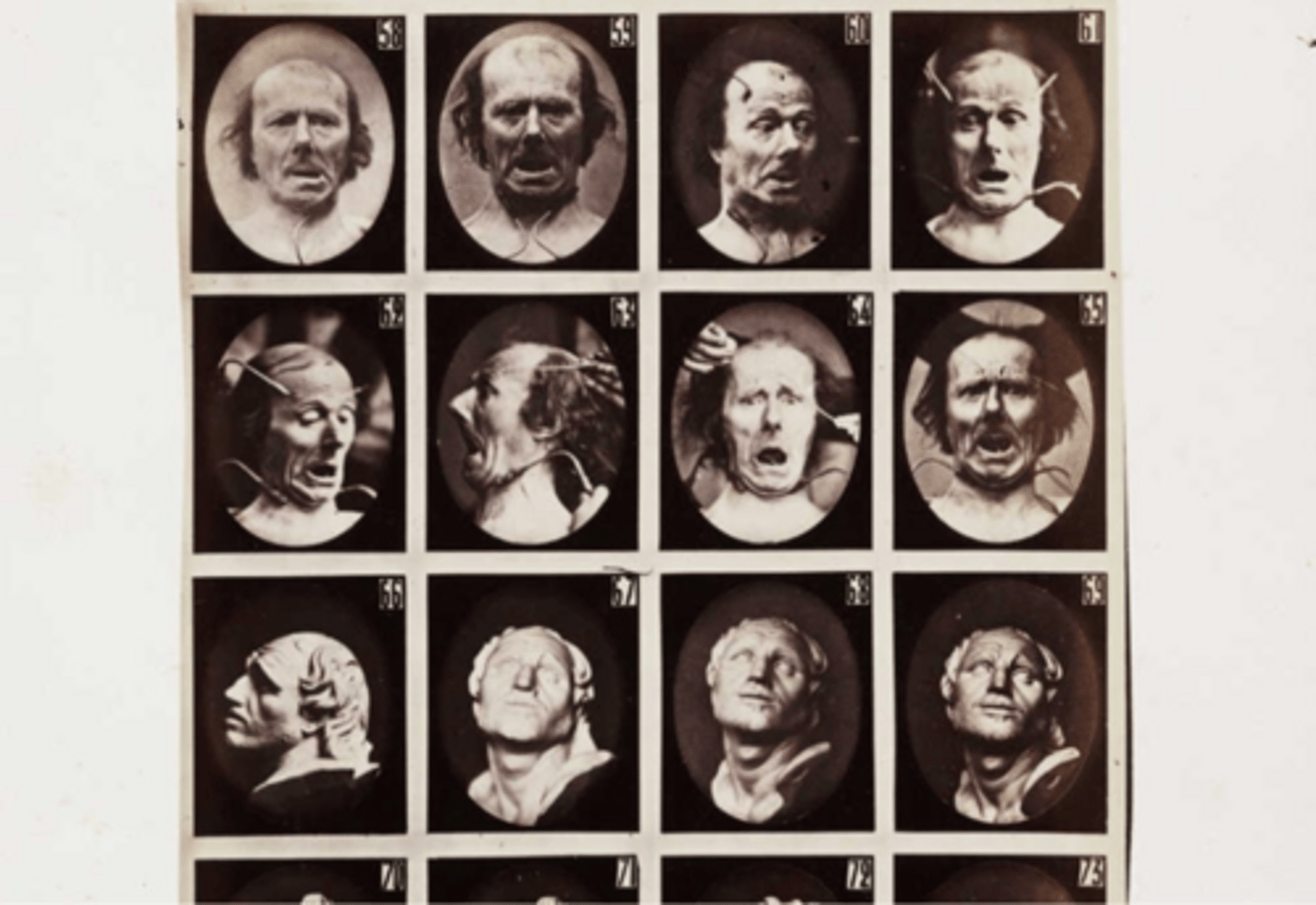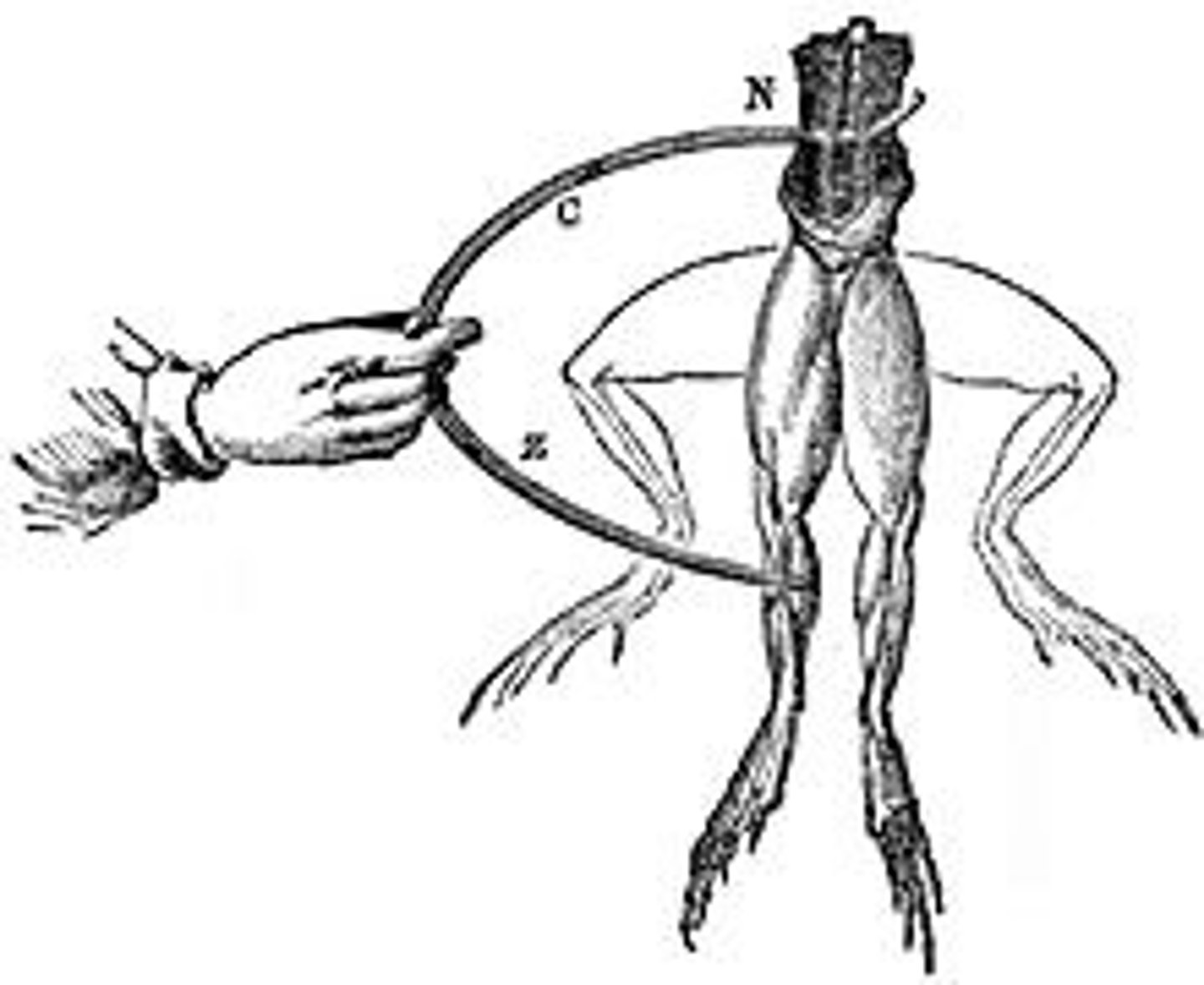Frankenstein Context + The Bloody Chamber: Context
1/68
There's no tags or description
Looks like no tags are added yet.
Name | Mastery | Learn | Test | Matching | Spaced |
|---|
No study sessions yet.
69 Terms
Rousseau quote on freedom
Man was born free, and he is everywhere in chains.
suggested that people would be happy in a state of nature away from the confines of commerce and urbanisation
In Frankenstein, Shelley depicts the creature as being happy in a natural state away from society:
The creature says, “sorrow only increased with knowledge. Oh, that I had for ever remained in my native wood nor known nor felt beyond the sensations of hunger, thirst, and heat!”
Like the Romantics, Shelley highlights nature as a source of reflection and restoration:
Victor goes to the Alps after the death of Justine:
Here he obtains the “greatest consolation”
argues children without guidance would be corrupted by society
Myth of Prometheus
the novel draws clear parallels between Victor Frankenstein and the Greek mythological figure of Prometheus.connects Victor Frankenstein to Prometheus and suggests that the book will be about an act of creation that results in severe punishment, a suggestion which proves true.

Romanticism
Through Frankenstein, she deals with issues such as human nature, society, science and the natural world
The Romantics were concerned about inequality in society and were generally sympathetic towards marginalised people:
For the most part, the story is narrated from the point of view of the wealthy and powerful, who are shown to control the narrative:
Shelley’s depiction of the creature as an outcast, and of women as not listened to, are examples of marginalisation
Romantic ideas were in part a reaction to the Industrial Revolution and its focus on commerce and urbanisation:

Physiognomy
the supposed art of judging character from facial characteristics.

The Enlightenment
a period before Romanticism where nature is seen as something to be dominated
Shelley's parents
•argued for social justice, human rights and equality
•Mary Wollstonecraft was a famous feminist, known for writing 'A Vindication of the Rights of Woman'
Birth of Frankenstein
In 1817, Mary and four friends were on a holiday in Switzerland. It was raining and they decided to tell each other ghost stories.
Gothic fiction
Popular in the 18th century, meant to excite reader's emotions and feelings
Proletariat
Marx's term for the exploited class, the mass of workers who do not own the means of production. Shelley's work plays on society's fear of creating monsters that go out of control and create revolutions.
Bourgeoisie
The monster is the proletariat that revolts against them in class struggle. His mere composition reflects that of the proletariat. For instance, he is created by the...
Enlightenment (16th - 18th Centuries)
The era before Frankenstein was written. Defined by developments in science, technology and industries, and logical and rationalism. Challenging the Catholic Church's teachings and politics- eg. The French Revolution.
Romanticism (18th 19th centuries)
This had a significant influence on Shelley:
Through Frankenstein, she deals with issues such as human nature, society, science and the natural world
The Romantics were concerned about inequality in society and were generally sympathetic towards marginalised people:
For the most part, the story is narrated from the point of view of the wealthy and powerful, who are shown to control the narrative:
Shelley’s depiction of the creature as an outcast, and of women as not listened to, are examples of marginalisation
Romantic ideas were in part a reaction to the Industrial Revolution and its focus on commerce and urbanisation:
Prometheus
The novel's subtitle is 'The Modern Prometheus'. Prometheus is a figure in Greek culture/religion, who made humans out of clay. He also stole fire from the Gods, and to punish him, they chained him to a rock and called an eagle to peck out his liver each day. This is a 'morality tale' about 'playing God' - one which Victor Frankenstein should have heeded!
Galvanism
The novel presents the pursuit of science as a threat to the order of the natural world:
Victor says, “how dangerous is the acquirement of knowledge and how much happier that man is who believes his native town to be the world, than he who aspires to become greater than his nature will allow"
There was a fear that the focus on science was moving people further from humanity and religion:
The consequences of Victor’s experiment are depicted as hellish through the use of language such as “breathless horror and disgust”
In 1780, Luigi Galvani carried out an experiment using electrical sparks to make a frog twitch. This created fears that people would try to bring organisms back to life:
The creature’s disgusting appearance could symbolise the horrors of this idea
Studies of anatomy, including the use of dissection, were becoming more common during this period:
Victor’s ambition to make a living being reflects a fascination and fear of these practices
As scientists tried to learn more about the mysteries of life and death, there was a widespread fear of the unknown:
Victor’s desire to understand the unknown leads to “an anxiety that almost amounted to agony”

Percy Bysshe Shelley
Author's husband. Older, politically radical, married man and a friend of Mary Shelley's father. Atheist.
William Godwin
The author's father. He was a radical philosopher and journalist, who home-educated Mary Shelley. He was very critical of the government and the class system.
Lord Byron
Influential poet/author and friend of Mary Shelley and her husband. Wealthy romantic and had many affairs and children. 'Mad, bad and dangerous to know'. Perhaps first 'Byronic hero'.
Jean-Jacques Rousseau
Philosopher from Switzerland - known to Percy Shelley and William Godwin. His theory (which was radical at the time!) was that people begin life as innocents, and may become corrupted/evil over time due to culture and society.
Polar exploration
was of great interest at the time with people searching for an open sea navigable across the North Pole to trade with the Orient - Walton not in first draft and may have been added after she read John Barrow's accounts of polar expeditions
corpses in 1800s
were in high demand for doctors of anatomy which led to grave robbing
Volney's 'Ruins of Empire' 1791
describes the earliest man as an orphan who has been deserted by the unknown powers that produced him and learns only by his senses
myths and monsters
in myths monsters are frequently constructed out of ill-assorted parts, like the griffin and Victor's monster continues this trend
Mahometanism
is referred to in Wollstonecraft's Vindication of the Rights of Women as an error to western culture; the refusal to grant women full membership as rational beings
Albatross (Rime of the Ancient Mariner)- Samuel Taylor Coleridge
in the poem an albatross follows a ship - generally a sign of good luck - the mariner shoots the albatross and it curses the ship. Poem can be interpreted as human violation of nature and the consequences of it

Mary Shelley was also inspired by...
'acute mental vision...of the hideous phantasm of a man stretched out'
'Frankenstein monster'
was used to signal the threat of 'revolting mobs'
Men and Women
had different typical characteristics e.g. women's appreciation of the family and nurture and man's egotism - creature seems more feminine than masculine
Where is 'The Bloody Chamber' set?
in France around the year 1900 during the Third Republic - time known for corruption and decadence
What does the protagonist's key in The Bloody Chamber allude to?
the story of genesis and Eve and the forbidden knowledge
What feminist text does the blind piano hint to?
Laura Mulvey's essay 'Visual Pleasure and Narrative Cinema' and her criticism of the 'male gaze'
What genre does The Courtship of Mr Lyon arguably fall into?
the romantic genre
How does The Courtship of Mr Lyon show similarities with Pride and Prejudice?
Elizabeth Bennet rejects Mr Darcy because of his pride. It is only when they recognise qualities that their love can blossom
How are Carter's tales similar to John Webster's The White Devil?
Carter's choice of setting as distant and fairy-tale like allows for the reader to make connections imaginatively without feeling attacked
Where is the Countess's castle set in The Lady of The House of Love?
the Carpathian mountain region in central Eastern Europe
What character does the Countess seem similar too when in her white dress?
Miss Havisham from Charles Dickens's Great Expectations
What is interesting about the end of The Lady of The House of Love?
even after the Countesses' death, the story is still first person narrative -> Still has power
What is the significance of the fact that the grandmother in The Werewolf is stoned to death?
Stoning acted as a form of punishment for women for adultery in ancient Christian texts
What other feral child story does Wolf Alice allude to?
Tale of Romulus and Remus, founders of Rome, being suckled by wolves
What is interesting about the narration in Wolf Alice?
Use of 'we' when narrating pushes an us vs them mentality to the detriment of the little girl - as soon as she becomes animalistic and rejects her obvious femininity, she is no longer viable
How does Wolf-Alice gain a sense of time?
when she begins menstruating - power of womanhood. Sync to moon - more wolf
Who says and in what text? "Like many of the girls in these tales, the tiger's bride has to strip back to her skin - nakedness and its attendant vulnerability (but also control) is often necessary in these tales in order for true self-discovery and illumination to take place."
Dr Andrew Green in 'Barriers and Boundaries in Gothic Literature'
What does Sowerby say over all about the Bloody Chamber collection?
"In this collection, curiosity and disobedience are essential weapons"
Who said that "In this collection, curiosity and disobedience are essential weapons from a woman to free herself from being infantilised by male control"?
Sowerby
What is the overall story of Justine (1791) - Marquis de Sade?
The protagonist is Justine, a virtuous women, ends up worse off and Juliet (less virtuous) does well. The overall moral of this piece of erotic literature is that morals are impositions on the freedom of the individual.
What is the significance of a pentacle of protection in The Bloody Chamber and The Lady of The House of Love?
symbol of protection in British folklore/Paganism - Simpson and Round state that it 'was reinterpreted in Christian terms as an emblem of the Five Wounds of Jesus, guaranteed to put demons to flight' (A Dictionary of English Folklore, 2000)
What did The Feminine Mystique (Betty Friedan, 1963) attack?
the notion that women could only find fulfilment through being a mother and a housewife
What is the general plot of Oscar Wilde's The Picture of Dorian Gray (1890) and how is it similar Dracula and 'The Lady of The House of Love'?
Dorian Gray sell his soul for eternal youth and year by year his portrait ages despite his appearance of youth. Links to the Countess in the Lady of the House of Love, Mina and Dracula. - fear of deceiving looks
What is the significance of the fact that the girl in The Snow Child is 'stark naked'?
female nudity is such an intrinsic part of male desire that it doesn't need to be explicitly wished for
What is the significance of colour in the Snow Child?
The Countess wears some of the colours of the Count's desire, but, the girl has them all naturally
What did Jeanette Winterson about Carters ability to change fairy tales?
Able to make them 'into something that gave women back the power'
What did Margret Atwood say about Carter and female empowerment?
'She was interested in a balance of scales. Not that women were more powerful than men'
What did Enright say about the means of achieving female agency in Carter's tales?
'Women are freed either by going into the difficulty or by killing the big bad man'
What did Margret Atwood say was necessary for female agency in Carter's tales?
'It is Carter's contention that a certain amount of tigerishness is necessary if women are to achieve an independent ... existence'
What did Helen Simpson say about a lack of female agency?
'To exist in the passive case is to die in the passive case'
What is the conclusion of the Grimm Brothers' Little Red Riding Hood?
a hunter comes and cuts open the wolf and save the girl and her grandmother and then fills the wolf's stomach with stones
After returning to London from Japan in the 70s what did Carter write for?
Spare Rib and was selling erotic short stories to men's soft porn magazines
What is the key metaphore in Carter's others work Night At The Circus?
the heroine has to pretend she doesn't have wings -> Women have to hide their skills to protect a fragile male ego
What are the three components of Freud's model of the self?
Id, Ego and Superego
Id:
Impulsive and unconscious part of our psyche - Responds directly and immediately to instincts
Ego:
Mediates to work out realistic ways of satisfying the id's demands
Superego:
Incorporates the values and morals of society and controls the id's impulses - Especially with those that society forbids E.g sex and aggression
Who (and in what book) used Marx's theory of alienation to explain the objectification that results from women's preoccupation with their appearance?
Sandra Bartky, Femininity and Domination
When was abortion legalised?
1967
When did the oral contraceptive pill became available to women on the NHS?
1961
sublime
Emotion and creativity were of great importance to the Romantics, evidenced in their idealisation of love and women:
In Frankenstein, Elizabeth is presented as sublime and a route to happiness for Victor, suggesting that emotion and relationships should be given more importance by society
The Romantic reader placed more stress on emotion:
The creature’s sadness leads to a deeper sense of empathy for his plight
The Romantics argued that people were born good, and that evil was a result of a lack of nurture and the negative aspects of society:
society
The Industrial Revolution was a period of rapid expansion of industrialisation and scientific knowledge between 1760 to 1840:
Victor’s prioritisation of science over nature is what leads to his downfall
This led to the Romantic emphasis on nature and emotion:
Social disparities were prevalent during the time Shelley was writing – there was an economic slump and high unemployment after the Napoleonic wars of 1815:
The creature symbolises the marginalised
He describes himself as "I the miserable and the abandoned, am an abortion, to be spurned at, and kicked, and trampled on"
The Romantics were concerned about inequalities in terms of wealth and power:
After the French Revolution, there was political turmoil as people began to question
he Romantics were concerned about inequalities in terms of wealth and power:
After the French Revolution, there was political turmoil as people began to question their rights and the old order:
Victor’s sole focus on himself and his individual actions are shown to have a negative impact on those around him
The French Revolution led to discussions about individual responsibility:
During the 19th century, women were discriminated against and not considered equal to men:
The portrayal of Justine, Elizabeth and Catherine reflects some of the gender injustices at the time
The self-centred actions of the male characters, such as Victor and Walton, can be seen as a criticism of men putting themselves first
Shelley’s mother, Mary Wollstonecraft, argued for women’s rights:
RELIGION
increased scientific development people questioned how far humans should explore the unknown
victor is shown to aspire and to have god like powers
He says he will “pioneer a new way, explore unknown powers, and unfold to the world the deepest mysteries of creation”
By attempting to understand these mysteries, Victor is portrayed as going against God and the natural order:
Victor says, “It was the secrets of heaven and earth that I desired to learn”
Shelley uses a lot of religious imagery:
The creature could be said to represent the devil:
He says, "But it is even so; the fallen angel becomes a malignant devil. Yet even that enemy of God and man had friends and associates in his desolation; I am alone”
romantic literature
shells used allusions to romantic literature to create an affect
franky and creature allude to paradise lost at points in the text
The creature says, “many times I considered Satan as the fitter emblem of my condition”
Victor suggests that he is “like the archangel who aspired to omnipotence, I am chained in an eternal hell”
REFERENCES TO THE RIME OF THE ANCIENT MARINER
Frankenstein recites this poem in Chapter 5 after creating the creature:
This could imply that Victor is cursed and, like the mariner, should be kind to his creature
It could also be intended to warn that, like the mariner, he will be cursed for defying God’s natural order
Walton says that he hopes not to come back to England like the ancient mariner
This may suggest that, like the mariner, Walton should learn the lessons of the past
The Gothic
can be considered as science fiction
explores results of transgression
Doppleganger - vicy walton creature - ambition and desire for connection
Shelley includes an anti-hero, as is often the case in gothic stories:
Frankenstein lacks heroic qualities
The aristocrat in gothic fiction often tends to be isolated and mysterious:
Victor comes from one of the “most distinguished” families in Geneva
Uncertainty about the story is a common theme of gothic texts:
Victor’s alteration of the text makes the reader have a lack of trust about how the events and the creature are presented
Gothic tales often depict isolated settings:
This can be seen by the description of the “cell” where Victor makes the creature
It can also be argued that Frankenstein is a work of parabolic fiction:
The novel comments on the importance of family, the dangers of unmitigated scientific knowledge and the problems of intense ambition